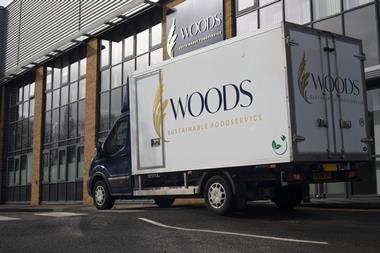A market reappraisal has broadened the sector's view of itself and sharp players are making their brands apply to a wider range of occasions
The spirits producers are buoyant with high expectations that the usual end of year boost to their sales will be worth having.
This mood of optimism is the product of good volume growth across most categories. Even blended whisky is in the black after years of steady decline
Spirits overall are showing volume growth of 2.7% (1.7% value) for the year to the end of August [ACNielsen], as a result of a combination of factors. The producers are taking a more focused approach to their markets and are working better with retailers to encourage consumers back into the category, and the general cyclical trends are swinging back in spirits favour.
This has been generated by a renewed interest in cocktails, partly as a result of premium packaged spirits.
These have stolen share, particularly among younger consumers, but, because the major brands are extensions of leading spirits, they are bringing about a reappraisal of spirits drinking and it is becoming more fashionable.
Tony Mair, commercial director at Guinness UDV says: "I don't want to see any more value taken out of premium products. There is no need, particularly as we will be investing so much more in our brands, so consumers' attraction to premium products will be as high as ever.
"We have been bullish in our forecasts for this winter based on these levels on investment."
Richard Hayes, acting marketing director at Allied Domecq, adds: "Two or three years ago the major categories were in long term decline. Now the major players have got their acts together. They understand the types of promotions that turn on consumers and customers.
"Their market research has led them away from ill considered promotions that just didn't work. At the same time they have become a lot closer to the retailers and are prepared to work on mutual strategies. Generally the spirits industry has become broader thinking in its quest to rejuvenate itself."
He maintains the sector has become aware that its drinks are part of a wide repertoire for most consumers who are also considering the drinks for a wider range of occasions. And the sharper players are making their key brands applicable to a much wider range of drinking situations
"We have all become much cleverer at making the most of things," he says.
One change that has helped the sector is the insistence by the major retailers on tailor-made activity. They are now looking for distinct points of difference and the suppliers have responded by creating greater variety.
Suppliers of the likes of Baileys, Tia Maria and Harvey Bristol Cream have been putting considerable work into moving the brands beyond the traditional after-dinner or pre-dinner drinking occasions, and making them less reliant on the massive pre-Christmas sales uplift.
As a consequence, advertising support has been introduced in the spring and summer with messages that they can be drunk long or over ice.
This is a long term strategy but Hayes believes there are signs that it is beginning to work. He adds: "The retailers have become very good at spotting the signature brands which are used as signposts on the drinks aisles. At one time own label was being used for this but the brand owners have now become more supportive of what retailers are trying to achieve."
The underlying picture for Scotch is better than it has been for some years. Ian Totman, Pernod Ricard UK's general manager, explains imported spirits such as Jameson, Bushmills and Jack Daniel's are doing well with sector volume growth of 4%.
"Blended whisky is up 1.7% (volume) but this is coming from activity on litre bottles which is why the value of the category has remained static."
Justin Adams, md of Maxxium, the UK's second biggest spirits supplier behind Guinness UDV says: "Blends are becoming exciting. The market is well ahead and The Famous Grouse has grown 4% in the last year and 12% in the July and August bimonth.
"Blended Scotch is turning the corner."
Malt whisky is still suffering the after effects of a good Millennium with volume sales down 6%.
Totman says: "The underlying growth is probably good. The Millennium was such a very exceptional year."
{{FOCUS SPECIALS }}
Close menu
- Home
- Retail & Wholesale
-
Products & Suppliers
- Back to parent navigation item
- Products & Suppliers
-
Product Categories:
- Back to parent navigation item
- Product Categories:
- Alcoholic drinks
- Bakery
- Cereals & breakfast
- Cheese
- Chicken & poultry
- Chocolate
- Confectionery
- Crisps, nuts & snacks
- Dairy
- Fish
- Fresh produce
- Frozen
- Household
- Meat
- Own Label
- Sauces & condiments
- Seasonal
- Soft drinks
- Vaping
- Vegan & plant-based
- World foods
- Suppliers
- People
- Reports & Data
-
Topics A-Z
- Back to parent navigation item
- Topics A-Z
-
Popular topics:
- Back to parent navigation item
- Popular topics:
- Cost of living crisis
- Crime
- Deposit Return Schemes
- Finance
- Government & Regulation
- Health
- Inflation
- Loyalty
- Marketing
- Mergers & Acquisitions
- New Product Development
- Sourcing
- Supply chain
- Sustainability & environment
- Technology
- Ultra Processed Foods
- Vaping
- A-Z all topics
- Content by type:
- Events
- Ask iA (beta)
- Subscribe now
Sign in to comment on this article
Not logged in before? Register for FREE guest access today.
You will be able to:
- Read more stories
- Receive daily newsletters
- Comment on stories
Advert














No comments yet